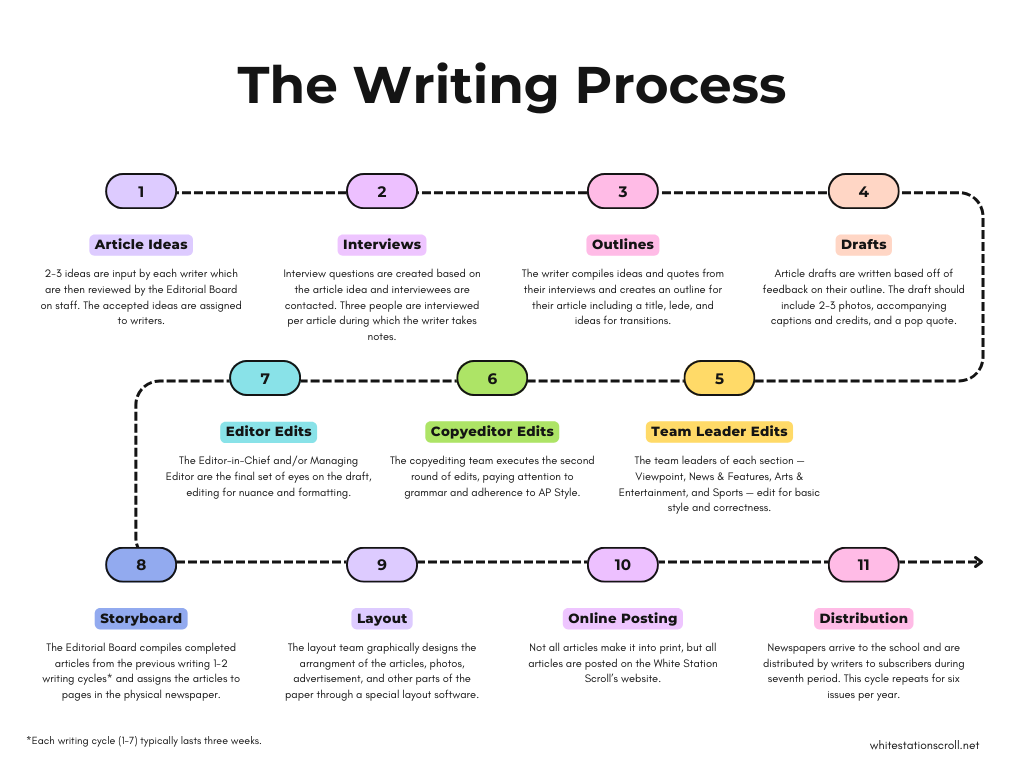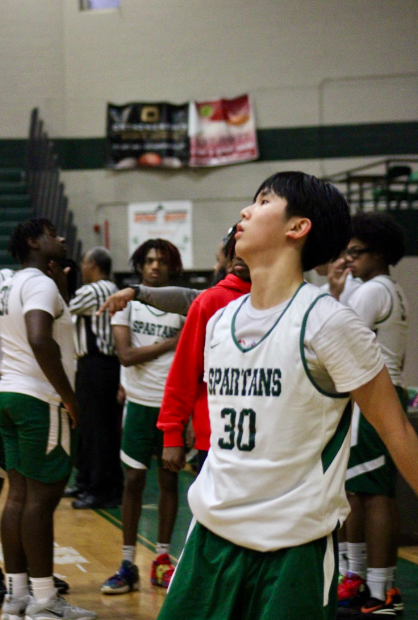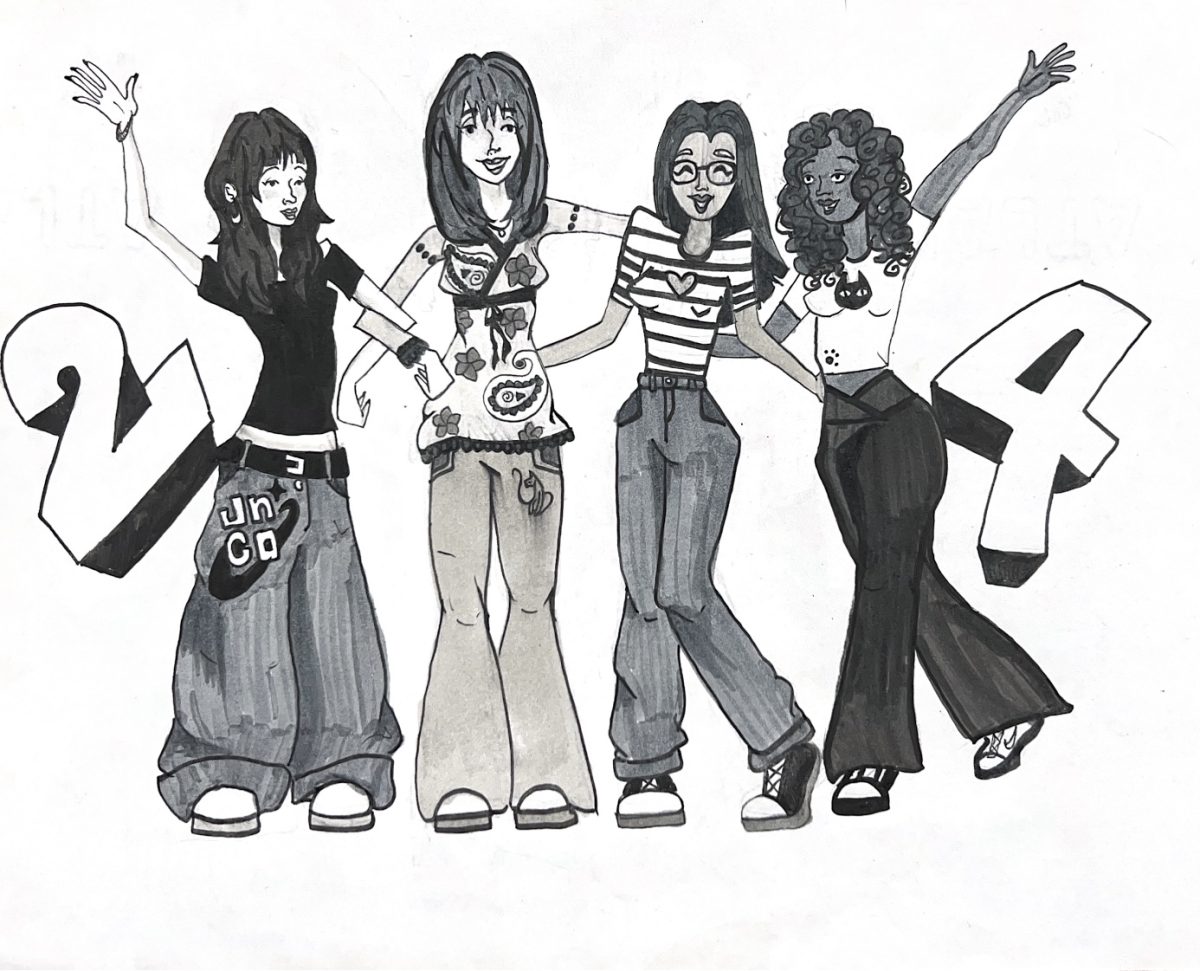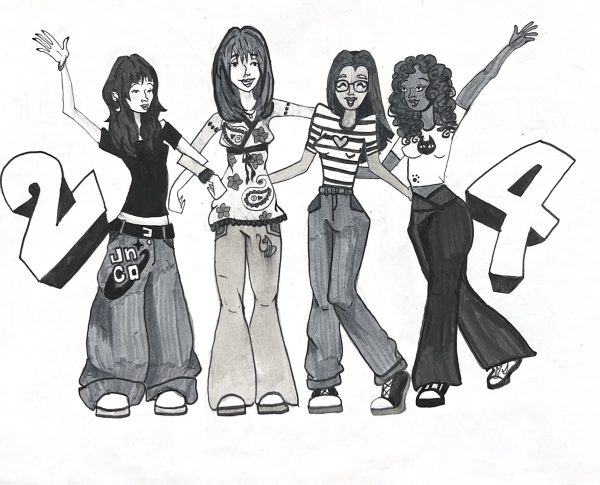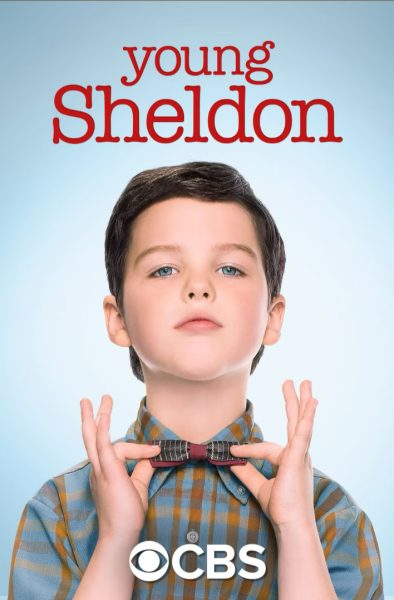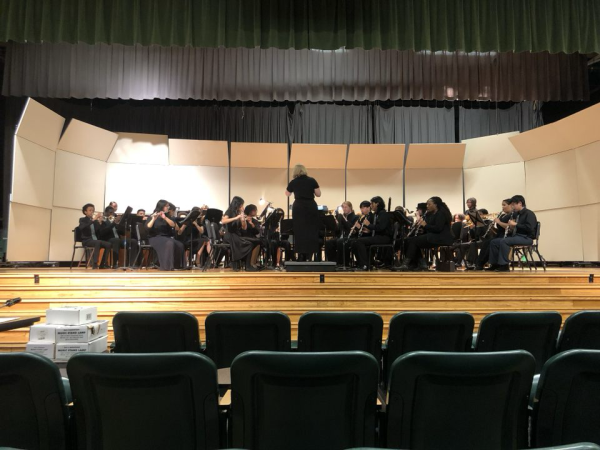A review and reflection of “12 Angry Jurors”
NANCY SHIELDS//USED WITH PERMISSION
The cast of “12 Angry Jurors” receive a shower of flowers and applause after the last showing on Nov. 5.

On the backside of the stage lights, the audience sinks into the hollow shadow of the auditorium and basks in the light of the actors up Olympus’ steps. They watch as the cast exchange moments of emotional outbursts and electrified reactions. The theater department’s new play, “12 Angry Jurors,” shows what student actors are capable of.
“We’ve played [Sarah Cameron’s (11) breaking scene] a few different ways before we finally got it to how we wanted it,” Finn Gilbert (12), playing Juror six, said. “I think Sarah really scared herself in that monologue or at least her character did. And that’s why it has such tension.”
The cast spent three months preparing for the opening showing on Nov. 3. Two weeks of that time was dedicated to learning who their character really was. Each actor imagined backstory for their character to give depth to the mannerisms and decisions made throughout the play. This invisible web of emotions behind every character produced a realistic portrayal of intense human interaction.
“I walked into [Thursday’s showing] really confident because I knew that if I wasn’t confident, it was going to show in my acting,” Gilbert said. “One of the pieces of advice we were given a lot was to attack your lines because otherwise you are just twelve people that are mildly perturbed at each other … [rather than] very angry.”
It can be difficult as an actor to pull off such powerful emotion in a believable way. To guide them, theater teacher Brandon Lawrence has worked with the actors to direct the show towards its amazing outcome. He also wrote an original script for this showing based on the movie “12 Angry Men” and other productions of this play.
“I really like [Lawrence’s directing style] because he’s really nice, he jokes around with us and he acts like a friend almost,” Mia Kitterlin (10), playing Juror three, said. “He can also be stern. It’s like tough love. People say that once you look at [Lawrence’s rehearsal] notes, you’ll cry, but I didn’t. I took it constructively and that’s what you’re supposed to do.”
The actors took on Lawrence’s critical notes intently. They all held the final presentation of this play to high esteem, knowing how much a good performance would dignify the cast and satisfy the audience. The only thing on their mind was avoiding mistakes.
“I’ve been on the soccer team [and] the pressure you feel on stage in a performance is incomparable,” Nathan Rojas-Fonseca (12) said. If you mess up on the field, you can prove yourself a dozen different ways … And you know the coach will say you did good. But on stage it’s only yourself and you’re doing this in front of a whole audience. You’re going to feel terrible [if you make a mistake], which only pushes you to do better. It is super nerve-racking.”
An actor’s feelings bear little thought to the audience during a performance as they are meant to put up a front. However, in emotional works like “12 Angry Jurors,” one can still see the actor’s genuine feeling in sync or contrasting with their character. Lawrence’s type-casting of the roles allowed for the audience to see this effect, further illustrating the play’s themes of social complexity.
“[“12 Angry Jurors”] is like a microcosm of society where you get a lot of people from different stages in life with different views, values, ideals and truths,” Rojas-Fonseca said. “… And that’s why I feel like a lot of high schools do this play because it really showcases everything about life and how interactions in society works.”
It takes a mature cast of open individuals to accomplish what they did. Balancing the spectrum of emotion in this roster of characters proves the talent of the White Station Theater Department.
“The whole process had a lot of ups and downs,” Gilbert said. “We had a lot of mistakes. We had a lot of laughs. We had a lot of times where one of us would cry because we were so overwhelmed and stressed. But in the end, I think it was all worth it because we all had an amazing time. I got to spend a lot of time with an amazing group of people who I am proud to call my friends.”
Your donation will support the student journalists of White Station High School. Your contribution will allow us to purchase equipment and cover our annual website hosting costs.









